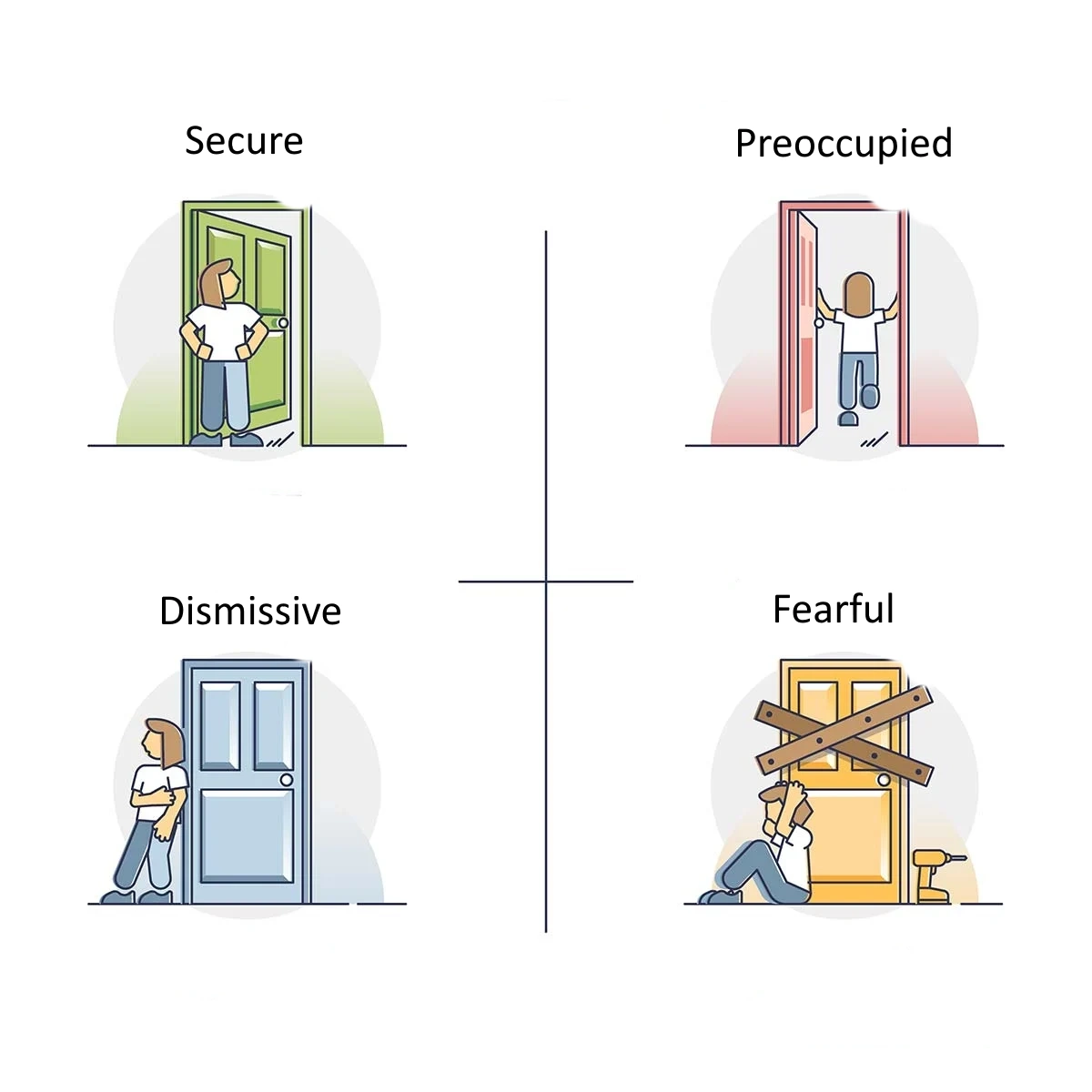Attachment and Loss in Wartime
Delving into how psychological attachment theory shapes character development in my writing. This article explores the profound influence of wartime loss and grief, shedding light on the enduring consequences for close relationships. Amidst the turmoil of loss, there lies an opportunity for healing—a chance that demands resilience from those thrust into adverse environments...

With a background in developmental psychology, I sometimes feel an implicit pressure to make scientific knowledge shine in my work as a writer. Do I ever achieve that goal? Perhaps not directly, but back in my final year of university I definitely enjoyed applying developmental theories to my characters… That was a good motivation to study! One of the topics that has fascinated me since the start of my journey with psychology is attachment theory. Here I’d like to explore how this relates to grieving the loss of loved ones during wartime.
The most basic idea of attachment theory is that early experiences with caregivers shape our expectations and behaviors in future relationships. Dealing with loss and trauma heavily implicates the attachment system. As my novel is set in the heart of World War II, it will not come as a surprise to you that bereavement is an inseparable component of the storyline and character development.
What are attachment patterns? A simple overview
Attachment patterns are styles of thinking, feeling, and believing developed in response to the parental environment – that is parents’ responsiveness, especially their reactions to the child’s comfort-seeking behaviors. Attachment styles are measured through observational studies with a very specific protocol. At the center are the infant’s responses to episodes of separation from caregiver and subsequent reunion. Four basic attachment styles are distinguished.
When the child experiences consistent and responsive caregiving, this leads to a secure attachment, characterized by feeling confident and safe in the relationship with their caregiver. The child seeks comfort and support from the caregiver in moments of distress but is also ready to explore the environment. The attachment figure constitutes a secure base to which they can confidently return if they feel the need.
When a parent is emotionally distant or unresponsive, children tend to develop an avoidant attachment, in which they ignore the caregiver. They do not seek comfort or support from them when they are distressed and appear indifferent to the caregiver’s presence or absence.
A parent who is inconsistent in responses, once dismissing the child, at other times providing comfort, can lead to an ambivalent attachment. The child is uncertain about whether the caregiver will react to signs of distress and, mirroring the parent, becomes inconsistent in responses. While becoming upset when the caregiver leaves, these children also resist later attempts at comfort upon the parent’s return.

While these three styles all possess structure, a strategy to adapt to the environment, the fourth type of attachment lacks such coherency – hence the term disorganized or fearful. Children with this style of attachment show inconsistent or confusing behaviors. At times they are frightened of the caregiver but may later try to seek comfort in them. These contradictory behaviors may be related to experiences of abuse or neglect. Children are faced with the terrible paradox that the person meant to bring them comfort and security is simultaneously the source of their distress and fear.
Long-term impact of attachment styles
These early childhood experiences are carried into adulthood and form the foundation for how we form relationships.
The manner in which we process loss and bereavement would stretch back to how we formed relationships in childhood. Secure attachment would aid the process of grieving. When the child-caregiver relationship was a secure one, arguably loss will be dealt with more adaptively…
Yet even the most secure attachment style can be disrupted by a sudden traumatic loss, tearing apart the construction which appeared to have such a solid foundation.
The loss of an attachment figure, say a parent, is a distressing situation. At any time, such a traumatic loss can upset the attachment system. These wounds can stubbornly persist into adulthood.
The unusual context of wartime
Losing a loved one during the war can lead to a myriad of negative feelings – insecurity, guilt, abandonment. Difficulty in forming and maintaining close relationships can follow, as the person struggles to trust others. Then there is the impact on sense of identity and self-worth – for instance when the person blames themselves for the loss. This can further develop into damaged self-images, characterized by a false belief that one is unworthy of love and care. Think of how such poisonous and intrusive ideas would affect you in trying to rebuild trustful friendships… Responses will vary across individuals, but following traumatic losses it is common to observe a person struggling with attachment-related difficulties such as fear of intimacy, emotional numbness, and avoidance of close relationships. Add to that the risk of depression and anxiety, and it becomes clearer how forming and maintaining healthy relationships is a trial – regardless of the age at which the loss occurs. War devastates childhood and tears families apart. Psychological hurt is not easily effaced by time. And this is not limited to a dark foreign past but continues today. The war in Ukraine has taken away thousands of lives. Yet the number of victims grows even further when we consider the psychological wounds inflicted on those who have experienced the death of loved ones. And these blows to the attachment system can persist for years on end if not brought to attention.
Healing the wounds
Attachment trauma is not an irrevocable damage which dooms a person to perpetual loneliness and insecurity. Healing and recovery are achievable and lie in the rebuilding of stable connections. In the midst of loss, finding a relationship that gives strength and security becomes a priority. The new attachment figure can then provide a source of resilience in dealing with the sequalae of trauma.
This must be someone who makes the person feel truly seen and heard, someone who will be helpful in regulating the traumatized nervous system.
Now is the time to tie this psychological babble to the themes of my novel. Spoiler alert - most main characters have experienced an attachment loss of sorts. After all they are thrown into the tempest of wartime. Behind the main events which move the plot forward, another latent issue is at hand, that of figuring out how to find a secure base in the midst of uncertainty. The inner trials and psychological development of my characters, their lived experience of loss and recovery, are of equal importance as the outer fight.
The significance of forming a new secure base makes it clear why the search for friendship is another central theme in my work. Building up a trusted network is the only way of navigating the confusing world.
Yet an important obstacle remains – the surrounding chaos created by war. Such an environment is not conducive to forming secure relationships. The ever-present uncertainty creates conflict as to whether any particular person is a source of comfort or danger. As I mentioned earlier, an upbringing stained by abuse or neglect can result in disorganized attachment. By analogy, the unpredictability of a war-torn environment might hinder (re)building safe and trusted bonds. The main heroes in my novel will thus be faced with an inner mission of restoring their sense of self and a stable relation with others. They will be thrown into the paradox of searching for a novel attachment figure in the middle of a tumultuous and disorganized storm. In such a world, it will be difficult to remain consistent with interpersonal feelings…
I invite you to think back to this after reading my book. Perhaps the vague allusions and references will become clearer at that point, and you will see some parallels with the trials faced by my characters. Up to you to judge whether their behaviors are consistent with attachment and loss theory…
Tags:- |
psychology |
war |